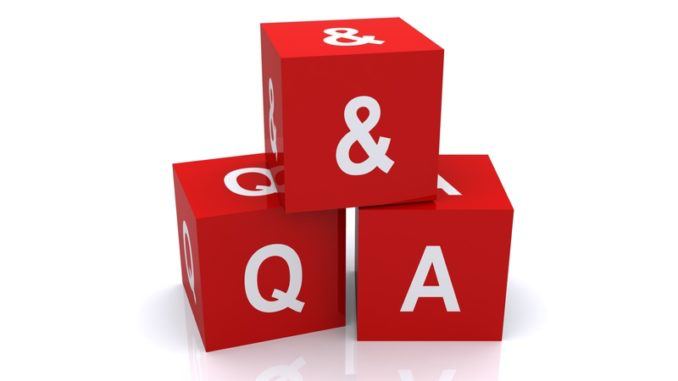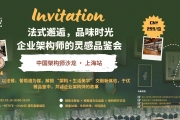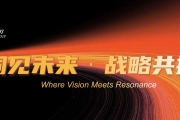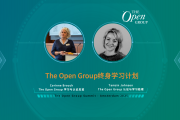【对话Chris Forde】The Open Group企业架构副总裁兼亚太区总经理克里斯·福德独家专访谈论敏捷
近日,The Open Group企业架构副总裁兼亚太区总经理克里斯·福德受邀接受“ARCHITECTURE & GOVERNANCE”杂志独家专访谈论敏捷方法。
(转载ARCHITECTURE & GOVERNANCE杂志 - Elevating EA)

What is driving the adoption of the Agile approach?
Chris Forde
敏捷方法对软件开发方法和IT部门的组织都产生了深远的影响。敏捷团队已成为推动数字化转型的楷模,进而发明新的商业模式,提供卓越的客户体验,并构建数字产品和高度自动化的运营模式。去年,第14期敏捷状态报告发现,95%的组织现在正在实践敏捷,企业将采用的首要原因归纳为其加速软件交付和能够加强对不断变化的优先事项进行管理的能力。
The Agile approach is having a profound impact on both software development methods and the organization of IT departments. Agile teams have become the norm for driving digital transformation and, in turn, inventing new business models, delivering a superior customer experience, and building digital products and highly automated operating models. Last year, the 14th State of Agile Report found that 95% of organizations are now practicing Agile, with businesses citing the top reasons for adoption as its ability to accelerate software delivery and enhance the management of changing priorities.
虽然敏捷实践和方法最初是为软件开发而创建的,但如今敏捷思维已十分盛行,正被应用于从零售到金融等不同行业的企业项目。随着全球疫情给许多企业带来了很大的不确定性,对敏捷和数字化转型的需求变得前所未有地强烈。因此,敏捷转型已成为向数字优先企业转变的必要条件。
While Agile practices and approaches were originally created for software development, Agile thinking has become so popular that it is now being applied to enterprise projects in different industries, from retail to finance. With the global pandemic bringing a large degree of uncertainty to many businesses, the need for agility and digital transformation has never been greater. Agile transformation has therefore become a necessity in the shift to becoming a digital-first enterprise.
然而,大规模采用敏捷可能很困难,特别是对大型组织来说。在许多情况下,它的部署是以牺牲架构为代价的,导致一些关键业务受挫。因此,企业架构(EA)在向敏捷、数字优先转型中至关重要——并且必须成为整个过程中所关注地焦点。
Adopting Agile at scale, however, can be a difficult, particularly for large organizations. In many cases, its deployment comes at the expense of architecture, causing a number of business-critical set-backs. For this reason, Enterprise Architecture (EA) is crucial in the transition to an Agile, digital-first culture – and must be a major concern throughout the process.
Who in the enterprise is driving the growing adoption of Agile?
推动敏捷转型的利益相关者因业务规模而异。在较小的组织中,一些敏捷/DevOps团队可以相互协调变化,管理汇报线路足够短使得管理层可直接向团队传达战略方向。然而,在大型组织中,可能有数百个敏捷团队,每个团队都只在大型“企业机器”的一部分上工作,需要更多的协调。如果您的敏捷团队无视整体的业务环境而构建孤岛,您仍然不会得到高适性和灵活性的最终结果——在未来推动变革时可能会变得更加困难。
The stakeholders driving Agile transformation differ depending on the size of the business. In smaller organizations, a few Agile/DevOps teams can coordinate change amongst themselves, and the lines to management are short enough that strategic direction can be conveyed to teams directly. In large organizations, however, there may be hundreds of Agile teams, each working on a part of the big “enterprise machine”, and more coordination is needed. If your Agile teams build silos that disregard the wider business environment, you will still not have an adaptive and flexible end result – and future change may become even more difficult.
当谈到大规模采用敏捷时,要切记对企业层面比软件层面进行考量更重要,这就是为什么架构是关键。EA提供的“大局”视图增加了价值,因为它涵盖了一系列利益相关者,而不仅仅是软件用户。将架构与敏捷相结合还鼓励利益相关者考虑预期结果、需要开发或改进的能力、所需资源、业务流程、需要实现的IT和有形基础设施等。
When it comes to adopting Agile at scale, then, it is important to keep in mind that there is more to an enterprise than software, which is why architecture is key. The “big picture” view offered by EA adds value as it encompasses a range of stakeholders, not just software users. Combining architecture with Agile also encourages stakeholders to think about desired outcomes, capabilities that need to be developed or improved, resources required, business processes, IT and physical infrastructure that needs to realized, and more
从治理的角度来看,EA为敏捷开发提供了护栏,确保来自不同敏捷交付团队的交付成果与业务的总体观点和战略保持一致。不仅如此,应用EA还确保所有结果都解决了互操作性问题,并满足合规和监管要求。
From the point of view of governance, EA provides the guardrails for Agile developments, ensuring that the deliverables coming from different Agile delivery teams are aligned with the overall view and strategy of the business. Not only that, applying EA also makes sure that all outcomes address interoperability issues and meet compliance and regulatory requirements
Q:科技行业有什么敏捷的具体例子可以突出显示吗?
Are there any specific examples of Agile that can be highlighted in the tech industry?
在The Open Group数字优先大会活动期间,兴业银行和富达投资公司概述了他们扩展敏捷以促进客户体验的经验,即敏捷转型的“北极星”。兴业银行的目标是提供无缝的客户对客户体验,而富达则通过制定客户旅程地图和相关的工作指南进而采用了客户视角。
During The Open Group Digital-First event, Société Générale and Fidelity Investments outlined their experiences of scaling Agile to boost client experience, the “north star” of Agile transformation. Société Générale had the goal of providing a seamless client-to-client experience, while Fidelity adopted a customer-in perspective via Customer Journey Maps, and the associated Jobs-To-Be-Done.
尽管这些敏捷转型之旅始于每个组织的IT部门,但它转变为涉及更广泛业务的全企业转型。因此,他们已经从一个孤岛式组织转变为一个由使用工业数字服务平台的价值驱动的综合业务/IT组织。
Despite these Agile transformation journeys beginning in each organization’s IT department, it changed to an enterprise wide transformation which involve the wider business. As such, they have shifted from a siloed organization to an integrated business/IT organization driven by value that uses industrial digital service platforms.
兴业银行和富达投资都采用了受Spotify启发的新组织模式。在实践中,这意味着建立部落和功能团队,或与业务价值链对齐的小队。各组织还使用The Open Group开放敏捷架构™(O-AA)标准,该标准旨在满足企业的具体情况,并大规模支持敏捷。
Both Société Générale and Fidelity adopted new organizational models inspired by Spotify. In practice, this meant setting up Tribes and Feature Teams, or Squads aligned to business Value Chains. The organizations also use The Open Group Open Agile Architecture™ (O-AA) Standard, which is tailored to meet the specific circumstances of the enterprise and support Agile at scale.
在整个敏捷转型过程中,两个组织都改变了心态、行为和治理。例如,富达采纳了领导原则,如客户主导,促成坦率的辩论,以及授权他人做出决定。与此同时,兴业银行改变了其管理需求和为项目分配资源的方式。
Throughout the Agile transformation process both organizations changed their mindset, behaviors, and governance. Fidelity, for example, adopted leadership principle such as being client obsessed, enabling candid debates, and empowering others to make decisions. Meanwhile, Société Générale altered the way it manages demand and allocates resources to projects.
What will The Open Group be doing in 2021 to perpetuate Agile?
去年,The Open Group推出了O-AA标准,以大规模支持敏捷。该标准记录了敏捷架构的具体最佳做法和技术,聚焦正在进行数字化转型的组织的需求。
Last year, The Open Group launched the O-AA Standard to support Agile at scale. The Standard documents specific best practices and techniques for architecting with agility, focusing on the needs of organizations undergoing digital transformation.
O-AA标准是对TOGAF® 标准的补充,TOGAF® 标准支持EA作为一门学科和角色。两者都可以作为架构师工具包的一部分一起使用,架构师工具包是The Open Group提供的与数字时代架构师相关的标准组合。工具包中的其他标准包括数字从业者知识体系标准(DPBOK™)和IT4IT™ 参考架构。
The O-AA Standard is complementary to the TOGAF® Standard, which supports EA as a discipline and a role. Both can be used together as part of the Architect’s Toolkit, a portfolio of standards from The Open Group that are pertinent for Architects in the digital age. Additional standards in the toolkit include the Digital Practitioner Body of Knowledge™ Standard and the IT4IT™ Reference Architecture.
TOGAF标准通过TOGAF ADM和TOGAF内容框架提供了框架和方法论,这些框架可以支持敏捷交付架构描述。O-AA方法更深入,提供了一套构建模块和最佳做法,以解决特定的敏捷相关话题,因此可用于调整TOGAF方法。
The TOGAF Standard provides the framework and methodology through the TOGAF ADM and TOGAF content framework that can support an Agile delivery of architecture descriptions. The O-AA approach goes deeper, providing the set of building blocks and best practices to address specific Agile related topics, so it can be used to adapt the TOGAF method.
TOGAF标准还将包括一套指南,演示如何将敏捷技术应用于EA工作,以及如何使用TOGAF标准来帮助实现企业敏捷性。在The Open Group架构论坛内还有一个非常活跃的敏捷工作组,该工作组正在制定在敏捷环境中使用TOGAF标准的进一步指南。重要的是,这些材料是基于我们成员单位的真实经历。
The TOGAF Standard is also due to include a set of guides that demonstrate how to apply Agile techniques to EA work, and how to use the TOGAF Standard to help enable enterprise agility. There is also a very active Agile working group within The Open Group Architecture Forum that is developing further guidance on using the TOGAF Standard in an Agile context. Importantly, this material is based on the real-world experiences of our Members.
展望未来,The Open Group的规划蓝图,要为O-AA标准添加更多深度和内容。为了做到这一点,团队正在遵循他们所谓的“剧本方法”。例如,O-AA™ 安全剧本现已发布,涵盖不同主题的其他指南将在未来陆续交付。
Looking ahead, The Open Group has a roadmap for adding more depth and content to the O-AA Standard. To do this, the team is following what they call a “playbook approach”. For example, an O-AA™ Security Playbook has now been published and other playbooks covering different topics will be delivered in due course.








